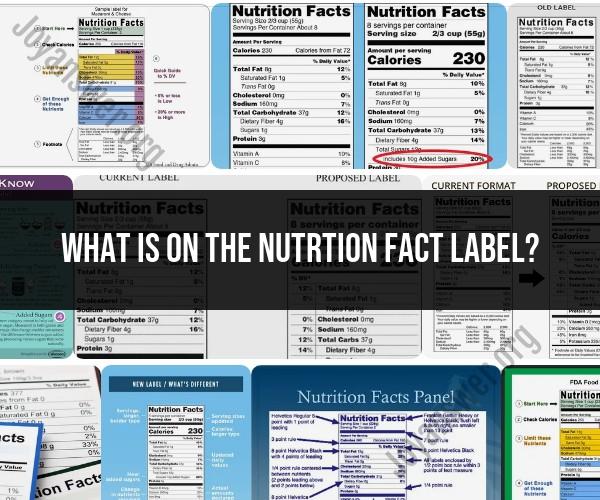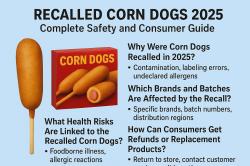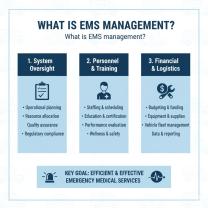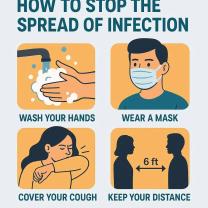What is on the nutrtion fact label?
The Nutrition Facts label is a standardized label found on most packaged food and beverage products in the United States. It provides valuable information about the nutritional content of the product. Here's what you can typically find on the Nutrition Facts label:
Serving Size: This is the recommended portion size for the product, and all the other information on the label is based on this serving size. It's important to note that the serving size may not necessarily reflect the portion you consume.
Calories: The total number of calories in one serving of the product. This helps you understand the energy content of the food.
Macronutrients:
- Total Fat: The total amount of fat in one serving, broken down into subcategories like saturated fat and trans fat.
- Cholesterol: The amount of cholesterol in one serving.
- Sodium: The quantity of sodium (salt) in one serving.
Total Carbohydrates: The total amount of carbohydrates, which includes dietary fiber and sugars. This section also indicates the amount of added sugars, which are sugars that are not naturally occurring in the food but are added during processing.
Protein: The amount of protein in one serving.
Vitamins and Minerals: The label may include information about certain vitamins and minerals present in the product, typically as a percentage of the Daily Value (DV). Common nutrients listed include vitamin D, calcium, iron, and potassium.
Percent Daily Value (%DV): This section shows the percentage of the Daily Value that one serving of the product contributes to your daily diet based on a 2,000-calorie diet. It's a useful reference to gauge how a product fits into your overall daily nutrition.
Footnote: The footnote provides information about the recommended daily intake of key nutrients based on a 2,000-calorie diet. It also includes information about what constitutes low, moderate, and high amounts of nutrients like fat, saturated fat, cholesterol, sodium, carbohydrates, and dietary fiber.
Ingredients List: While not part of the Nutrition Facts label itself, the ingredients list on the packaging provides information about the specific ingredients used in the product, listed in descending order of quantity. This helps you identify any potential allergens or additives.
Allergen Information: If the product contains common allergens like peanuts, tree nuts, soy, wheat, milk, eggs, fish, or shellfish, it is typically highlighted in the ingredients list or mentioned separately for allergy awareness.
These labels are designed to help consumers make informed choices about the foods they consume. By checking the Nutrition Facts label, you can assess the nutritional content of a product, monitor your daily intake of specific nutrients, and make healthier dietary choices. Keep in mind that serving sizes may vary between products, so pay attention to serving size comparisons when evaluating different foods.













